When the impact of travel on the planet is more scrutinized than ever, exploring sustainable destinations in Europe offers a path to experiencing the continent’s rich culture and natural beauty while minimizing ecological footprints. Europe, with its diverse landscapes, historic cities, and commitment to environmental conservation, presents numerous opportunities for the eco-conscious traveler. From Scandinavia’s renewable energy-powered villages to France’s organic vineyards and the conservation-focused islands of Greece, sustainable travel in Europe is not just about where you go—it’s about how you choose to engage with the world. This guide uncovers destinations leading the way in sustainability, ensuring that your travels contribute positively to the preservation and enrichment of these locales.
1. Ljubljana, Slovenia
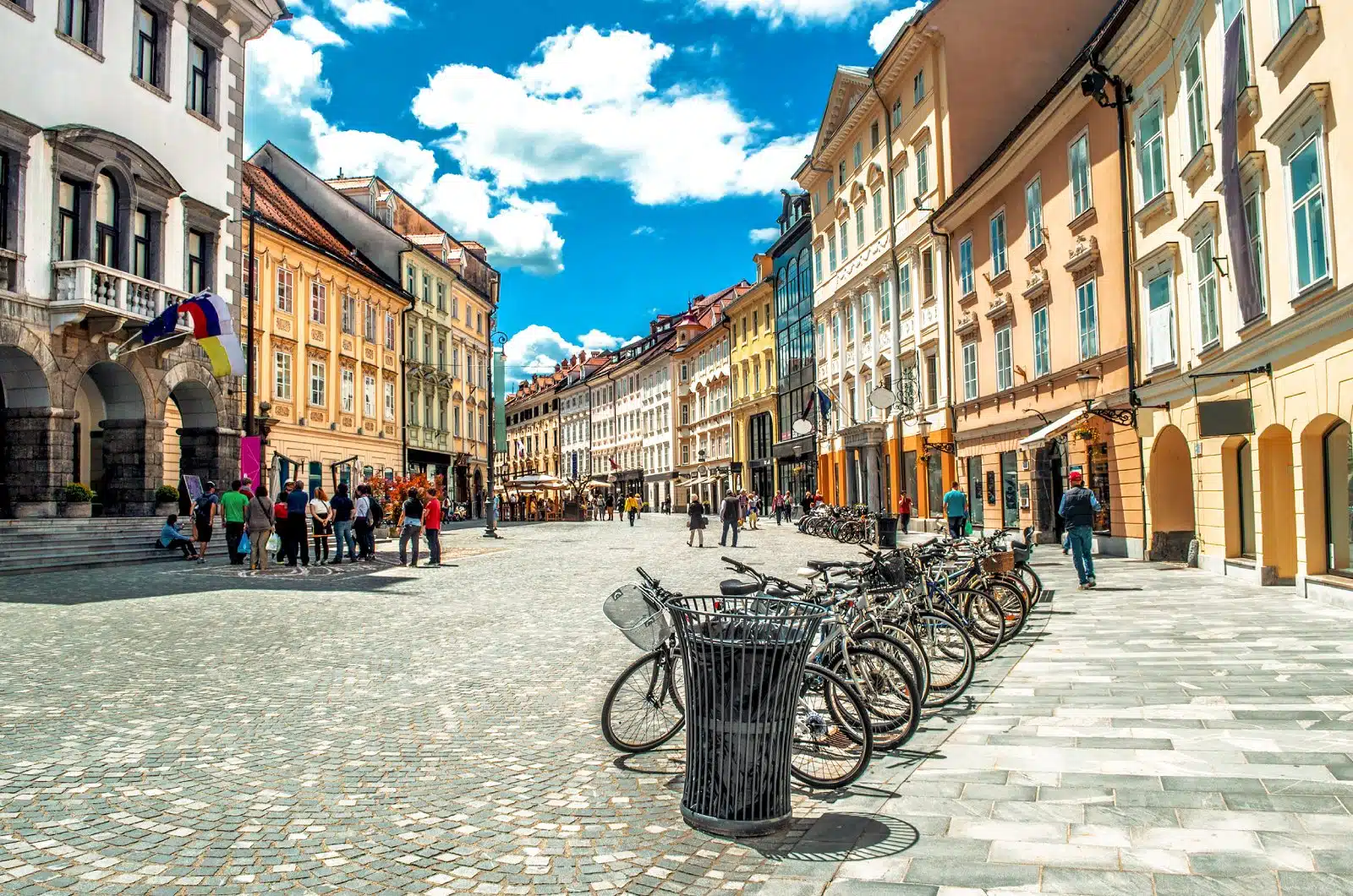
Image Credit: Shutterstock / Luca Lorenzelli
Ljubljana, the charming capital of Slovenia, has been recognized for its green initiatives, pedestrian-friendly city center, and commitment to sustainable tourism. The city’s extensive bike paths, electric shuttle vehicles, and green spaces exemplify its dedication to balancing urban life and nature. Ljubljana’s efforts in waste management, energy-efficient public lighting, and protection of its green areas have set it apart as a model for sustainable urban development. Visitors can explore the picturesque Old Town, enjoy the vibrant café culture, and take part in eco-friendly tours that showcase the city’s history, architecture, and efforts in conservation.
Insider’s Tip: Rent a bike from one of the many BicikeLJ stations to explore the city like a local while reducing your carbon footprint.
When to Travel: Spring (April to June) and fall (September to October) offer mild weather and fewer crowds, perfect for exploring the city’s outdoor spaces.
How to Get There: Ljubljana is well-connected by train and bus to major European cities. The Ljubljana Jože Pučnik Airport is just a short drive from the city center.
2. Copenhagen, Denmark
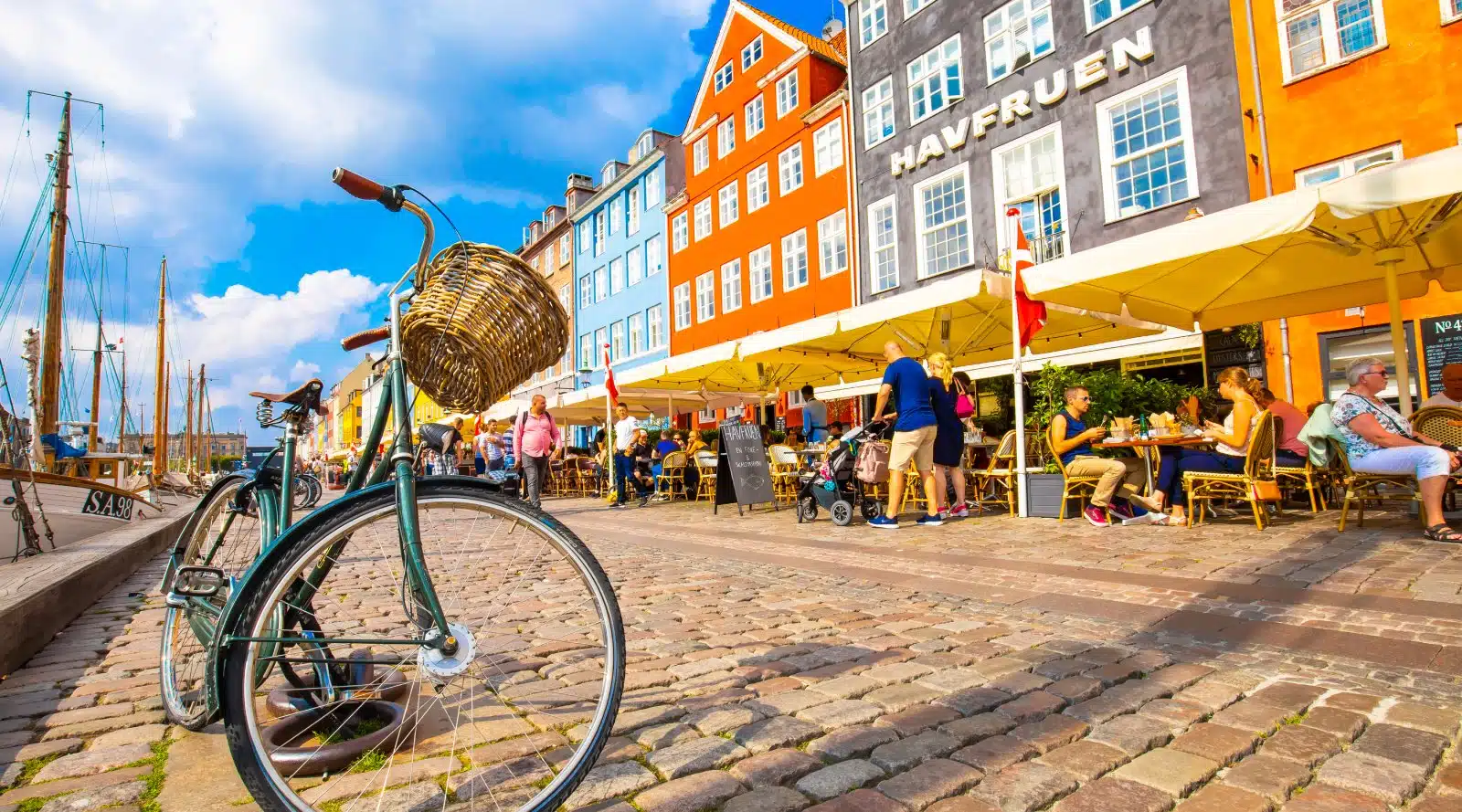
Image Credit: Shutterstock / Arcady
Copenhagen’s reputation as one of the world’s most sustainable cities is well-earned, with its ambitious goal to become carbon neutral by 2025. The Danish capital is renowned for its cycling culture, renewable energy initiatives, and green spaces. The city’s investment in wind power, district heating, and an extensive cycling infrastructure demonstrates its commitment to sustainability. Visitors can enjoy a multitude of experiences, from dining at organic restaurants and exploring eco-friendly neighborhoods like Ørestad to discovering the city’s green rooftops and participating in guided sustainability tours.
Insider’s Tip: Take a guided tour of Copenhagen’s green roofs and urban gardens to learn about the city’s innovative approaches to sustainability.
When to Travel: The best time to visit Copenhagen is during the summer months (June to August) when the weather is ideal for cycling and outdoor activities.
How to Get There: Copenhagen Airport serves as a major hub for international and domestic flights. The city center is easily accessible by metro, train, and bus.
3. Costa Navarino, Greece

Image Credit: Shutterstock / EQRoy
Costa Navarino, located in the Peloponnese region of Greece, is a luxury resort destination that strongly emphasizes environmental sustainability and cultural preservation. Principles of eco-friendly construction, energy efficiency, and water conservation guide the resort’s design and operations. It offers a range of activities that connect visitors with the local culture and natural environment, including olive harvesting, traditional cooking classes, and nature walks. The surrounding area, with its pristine beaches, olive groves, and historical sites, provides a stunning backdrop for a sustainable holiday experience.
Insider’s Tip: Participate in the resort’s “Philosophy Walks,” where you can explore the natural beauty of the region while engaging in discussions about philosophy, history, and the environment.
When to Travel: Visit in the late spring (May) or early fall (September to October) to enjoy pleasant weather and avoid the peak tourist season.
How to Get There: The nearest major airport is Kalamata International Airport, with seasonal flights from various European cities. Costa Navarino is also accessible by car from Athens, and the journey is approximately 3.5 hours.
4. Azores, Portugal
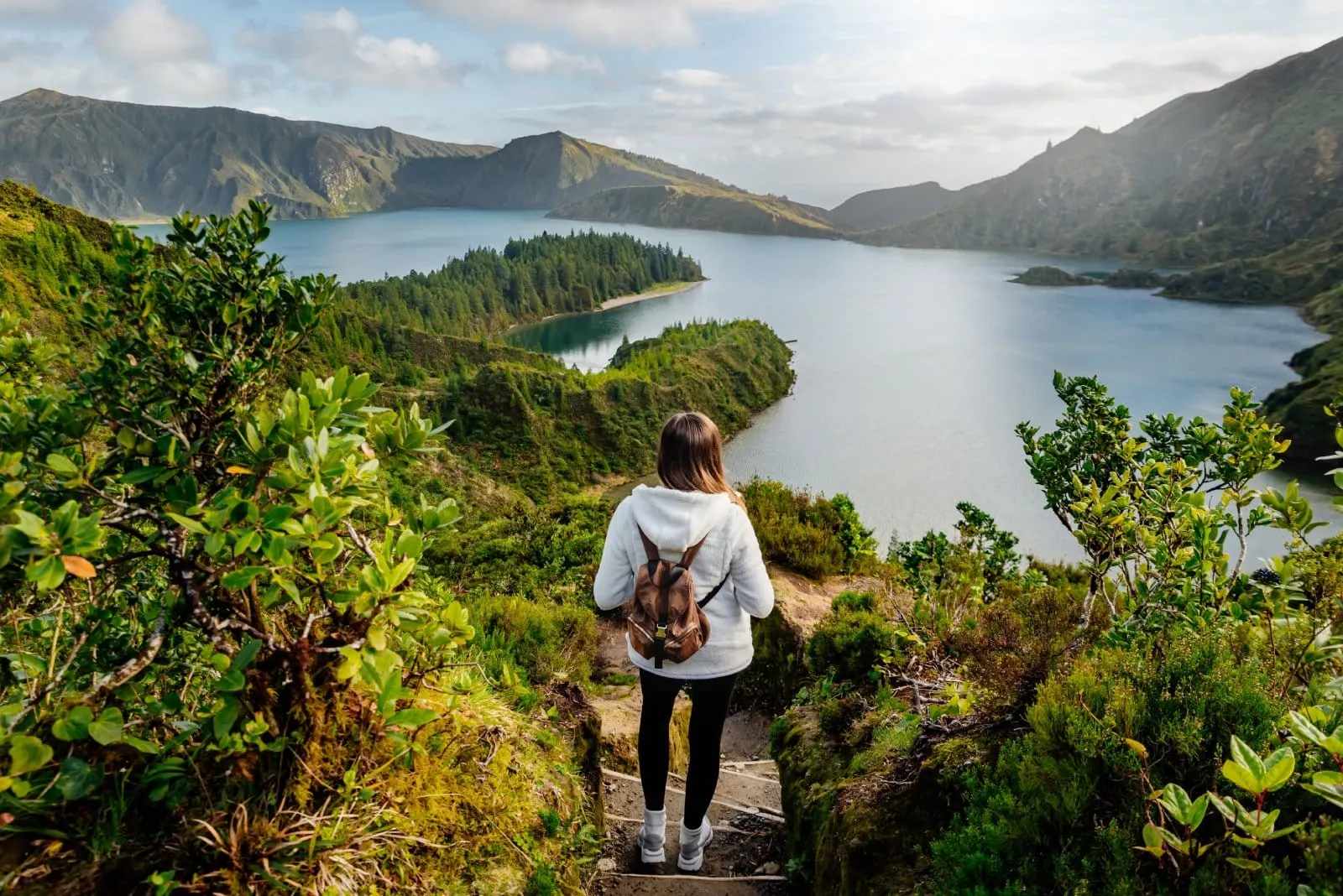
Image Credit: Shutterstock / Damian Lugowski
The Azores, an archipelago in the mid-Atlantic, is a leading example of sustainable tourism, focusing on preserving its unique ecosystems and promoting eco-friendly activities. The islands are known for their geothermal energy production, marine conservation efforts, and sustainable agriculture. Visitors can explore the stunning landscapes through whale watching, hiking in the volcanic craters, and diving in protected marine areas. The Azores’ commitment to environmental stewardship ensures that its natural wonders remain unspoiled for future generations.
Insider’s Tip: Stay at one of the many eco-lodges or sustainable accommodations available on the islands to further minimize your environmental impact.
When to Travel: The best time to visit the Azores is from April to October, when the weather is mild, and the islands are lush.
How to Get There: The Azores are served by the João Paulo II Airport in Ponta Delgada on São Miguel island, with direct flights from Lisbon, Porto, and select European cities.
5. Valsugana, Italy

Image Credit: Shutterstock / Florian Augustin
Nestled in the Trentino region, Valsugana is Italy’s first certified sustainable destination, recognized for its commitment to preserving its natural and cultural heritage. The area boasts pristine lakes, thermal springs, and lush forests, offering many outdoor activities that encourage a deep connection with nature, from cycling along the Via Claudia Augusta to kayaking on Lake Levico. Valsugana’s approach to tourism focuses on eco-sustainability, promoting local products, renewable energy, and conservation projects that protect its breathtaking landscapes.
Insider’s Tip: Explore the Arte Sella, an outdoor museum where art and nature intertwine, featuring sculptures and installations set within the forest landscape.
When to Travel: Summer (June to August) is ideal for enjoying the lakes and outdoor activities, while autumn (September to October) showcases the region’s stunning foliage.
How to Get There: The closest major city is Trento, which is accessible by train from major Italian cities. From Trento, Valsugana can be reached by car or local bus services.
6. Iceland

Image Credit: Shutterstock / Jose Manuel Perez
Iceland stands at the forefront of sustainable travel, with its use of geothermal energy, preservation of natural landscapes, and focus on eco-friendly tourism practices. The country offers an otherworldly landscape of glaciers, hot springs, volcanoes, and waterfalls, inviting visitors to explore its beauty while emphasizing the importance of environmental responsibility. From bathing in the geothermal waters of the Blue Lagoon to witnessing the majesty of the Northern Lights, Iceland provides a travel experience that is both breathtaking and grounded in principles of sustainability.
Insider’s Tip: Choose tour operators certified by Vakinn, Iceland’s official quality and environmental certification, to ensure your activities support sustainable tourism practices.
When to Travel: Visit during the shoulder seasons of spring (April to May) and fall (September to October) for fewer crowds and the chance to see the Northern Lights.
How to Get There: Keflavík International Airport is the main gateway to Iceland, with direct flights from North America and Europe. Reykjavik is a short drive from the airport, serving as a base for exploring the country.
7. Tyrol, Austria

Image Credit: Shutterstock / Kirk Fisher
Tyrol, a region in the Austrian Alps, is celebrated for its stunning alpine scenery and commitment to sustainable tourism. The region promotes green mobility with its well-developed public transportation network and initiatives like the “Tirol Ticket,” which encourages using buses and trains to explore its mountains, valleys, and villages. Tyrol’s dedication to preserving its natural environment is evident in its protected areas, eco-friendly accommodations, and outdoor activities that range from hiking and cycling in the summer to skiing and snowboarding in the winter, all designed to have minimal impact on the ecosystem.
Insider’s Tip: Take advantage of the comprehensive network of electric bike charging stations throughout Tyrol to easily explore the region’s breathtaking landscapes.
When to Travel: Tyrol offers year-round attractions, with skiing and winter sports from December to March and hiking, cycling, and cultural festivals in the summer months.
How to Get There: Innsbruck, the capital of Tyrol, has an international airport and is also easily accessible by train from major Austrian and German cities.
8. West Sweden
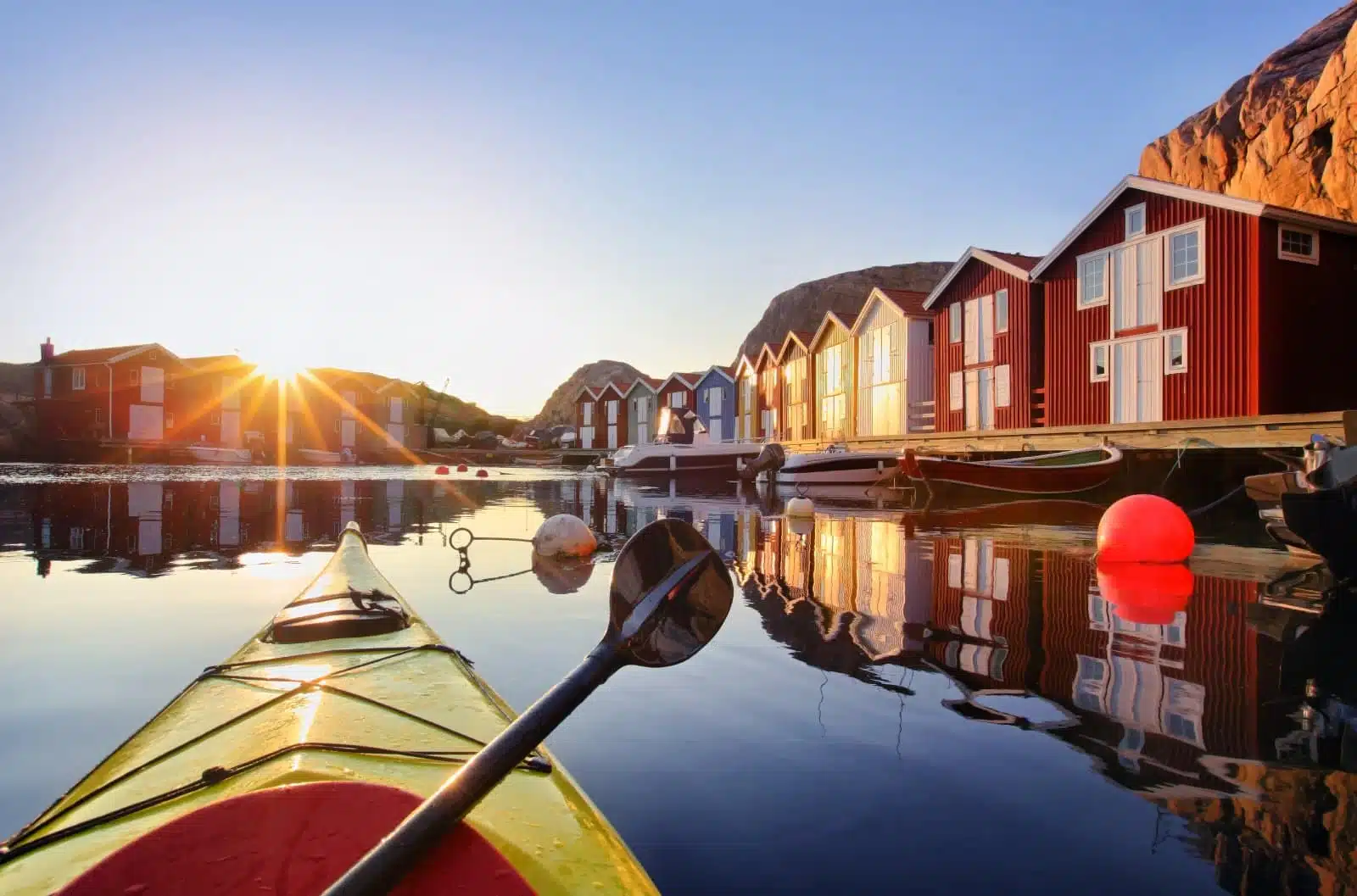
Image Credit: Shutterstock / Mikael Damkier
West Sweden, with its rugged coastline, pristine archipelago, and dense forests, is a model of sustainable tourism in Scandinavia. The region is known for its “close to nature” experiences, such as kayaking in the archipelago, wild camping under the Right of Public Access, and foraging for wild foods. West Sweden’s commitment to sustainability is reflected in its culinary scene, which emphasizes local, organic ingredients and in the conservation efforts that protect its unique marine and terrestrial habitats.
Insider’s Tip: Participate in a seafood safari to learn about and taste the region’s sustainable seafood, including oysters, mussels, and lobsters.
When to Travel: The best time to visit is from late spring to early fall (May to September), when the weather is pleasant and the days are long.
How to Get There: Gothenburg is the gateway to West Sweden, with an international airport and train connections to Stockholm and other Scandinavian cities.
9. Alonissos, Greece
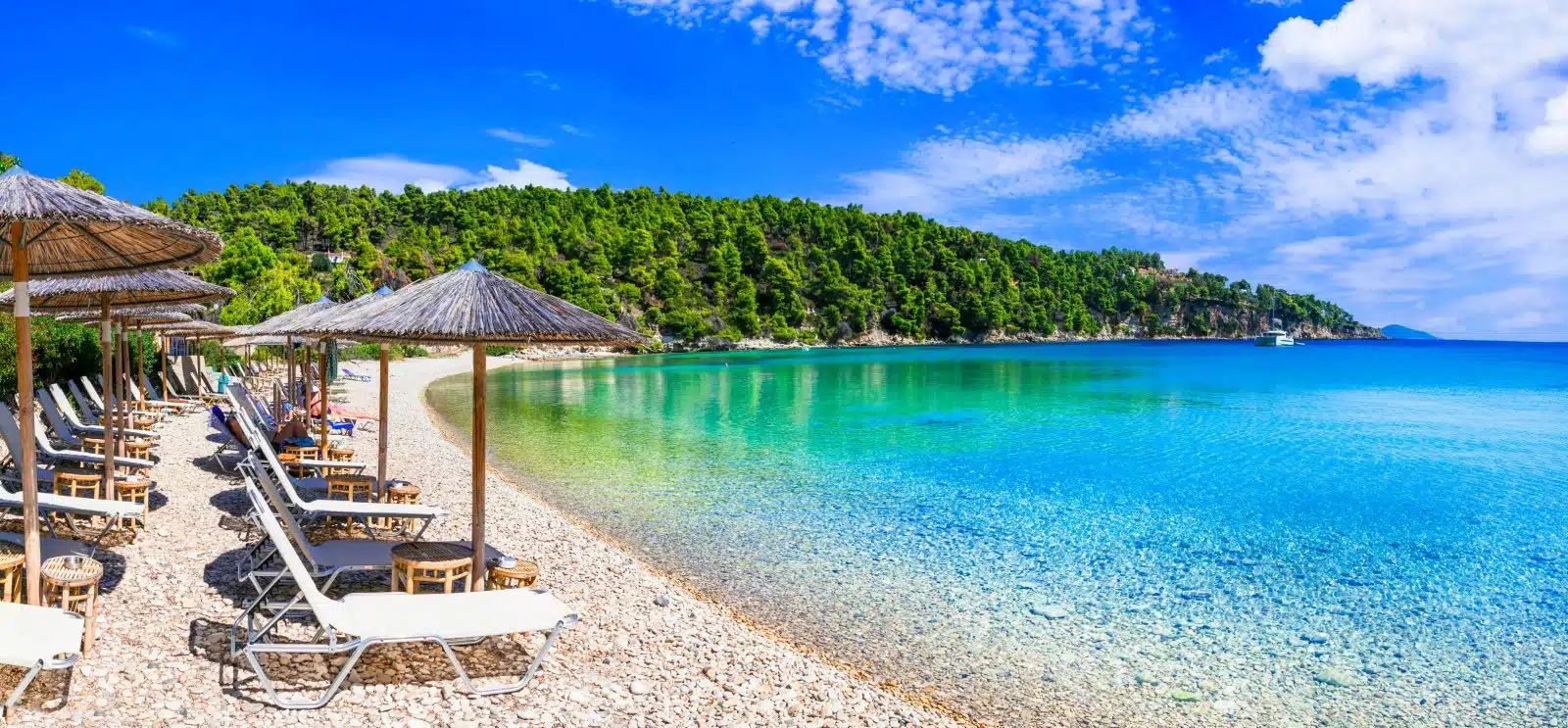
Image Credit: Shutterstock / leoks
Alonissos, part of the Northern Sporades archipelago, is a pioneer in marine conservation in Greece, home to the National Marine Park of Alonissos and Northern Sporades. The first in Greece, the park protects marine life, including the Mediterranean monk seal. Alonissos promotes sustainable tourism through eco-friendly accommodations, responsible diving and snorkeling tours, and initiatives that involve the local community in conservation efforts. The island’s crystal-clear waters, pebbled beaches, and verdant landscapes offer a tranquil escape for those looking to connect with nature and support environmental preservation.
Insider’s Tip: Visit the Marine Park Information Center in Patitiri to learn about the island’s marine biodiversity and conservation projects before exploring the park’s waters.
When to Travel: The ideal time to visit Alonissos is from May to September, with warm weather that is perfect for swimming and exploring the marine park.
How to Get There: Alonissos is accessible by ferry from the Volos or Skiathos port. The closest airport is on Skiathos, with domestic and charter flights during the summer.
10. The Lake District, England

Image Credit: Shutterstock / Shaiith
The Lake District, England’s largest national park, is renowned for its stunning lakes, mountainous landscapes, and literary heritage. It is also a leader in sustainable tourism, with initiatives to preserve its natural beauty and support the local economy. Visitors can enjoy a range of eco-friendly activities, from hiking and cycling on well-maintained trails to sailing on electric boats. The Lake District encourages sustainable travel within the park through its extensive public transportation network and promotes local crafts and produce, ensuring that tourism benefits the community and the environment.
Insider’s Tip: Opt for a stay in one of the Lake District’s eco-friendly accommodations, which range from luxury hotels with green credentials to cozy, sustainable cottages.
When to Travel: Spring (March to May) and autumn (September to November) offer mild weather and fewer crowds, ideal for enjoying the natural beauty of the Lake District.
How to Get There: The Lake District is accessible by train from major UK cities, including London, Manchester, and Glasgow. The nearest airports are Manchester and Newcastle, with train connections to the Lake District.
The Bottom Line

Image Credit: Shutterstock / Natalia Deriabina
Exploring sustainable destinations in Europe is an enriching journey that allows you to experience the continent’s diverse cultures and landscapes while contributing positively to the environment and local communities. From Ljubljana’s green initiatives to the Azores’ conservation efforts and the eco-friendly adventures in Tyrol, sustainable travel in Europe offers a path to meaningful and responsible exploration. As you embark on this journey, remember that sustainable travel is about the destinations you choose and how you engage with them. By traveling mindfully, respecting nature and local cultures, and supporting eco-friendly practices, you can help preserve Europe’s beauty and heritage for future generations to discover and cherish.
More From The Green Voyage
Top 10 Trending Travel Destinations 2024
6 Essential Banking Apps for International Travel – Managing Your Finances on the Go
Traveling With Kids – 10 Tips to Create Memorable Family Holidays
The post Exploring Sustainable Destinations in Europe first appeared on The Green Voyage.
Featured Image Credit: Shutterstock / Vlad Teodor.
For transparency, this content was partly developed with AI assistance and carefully curated by an experienced editor to be informative and ensure accuracy.
Tips for Trip Success
Book Your Flight
Find an inexpensive flight by using Kayak, a favorite of ours because it regularly returns less expensive flight options from a variety of airlines.
Book Your Hotel or Special Accommodation
We are big fans of Booking.com. We like their review system and photos. If we want to see more reviews and additional booking options, we go to Expedia.
You Need Travel Insurance!
Good travel insurance means having total peace of mind. Travel insurance protects you when your medical insurance often will not and better than what you get from your credit card. It will provide comprehensive coverage should you need medical treatment or return to the United States, compensation for trip interruption, baggage loss, and other situations.Find the Perfect Insurance Plan for Your Trip
